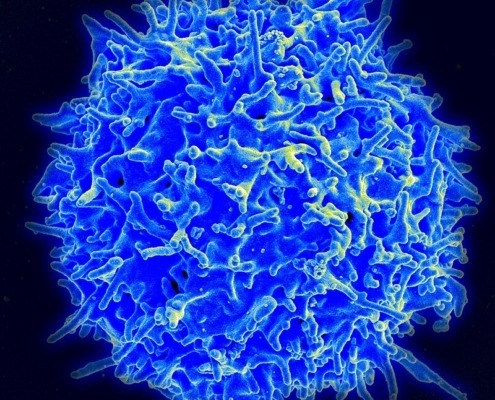Memory T Cells Cancer?
Various herbs and natural compounds have been studied for their potential immunomodulatory effects, including the activation of T cells.
Memory T cell development is a complex process involving the adaptive immune response and research on herbs specifically targeting this aspect.
-
Memory T Cells Cancer? Responses can differ. Here are a few herbs that have been studied for their immunomodulatory effects:
- Astragalus (Astragalus membranaceus):
- Astragalus has been traditionally used in Chinese medicine for immune support. Some studies suggest it may have immunomodulatory effects, but specific research on memory T cell generation is limited.
- Echinacea (Echinacea spp.):
- Echinacea is known for its potential immune-enhancing properties. It has been studied in the context of respiratory infections, and while it may influence certain immune cells, its direct effect on memory T cells is not well-established.
- Curcumin (from Turmeric, Curcuma longa):
- Curcumin has anti-inflammatory and immunomodulatory properties. It has been investigated for its effects on various immune cells, but its specific role in memory T cell development is an area of ongoing research.
- Green Tea (Camellia sinensis):
- Epigallocatechin gallate (EGCG), a polyphenol found in green tea, has been studied for its immunomodulatory effects. Green tea extracts may influence the activation of T cells, but research on memory T cells is not as extensive.
- Ginseng (Panax ginseng):
- Ginseng is considered an adaptogen with potential immune-modulating properties. Studies have explored its effects on different immune cells, but more research is needed to understand its specific impact on memory T cells.
- Astragalus (Astragalus membranaceus):
Memory T Cells Cancer?
Immunological memory is a crucial feature of the adaptive immune system, allowing it to “remember” and respond more effectively to specific pathogens upon re-exposure. This memory function is primarily carried out by specialized immune cells, including memory T cells and memory B cells. Here’s how immunological memory works:
- Primary Immune Response:
- When the adaptive immune system encounters a new pathogen (antigen), such as a virus or bacteria, it initiates a primary immune response.
- During the primary response, naive T cells and B cells are activated and differentiate into effector T cells and plasma cells, respectively.
- Memory Cell Formation:
- As part of the primary immune response, a subset of T cells and B cells differentiates into memory cells.
- Memory T Cells: These are T lymphocytes that “remember” the specific antigen encountered during the initial infection. They are long-lived and can persist in the body for an extended period.
- Memory B Cells: These are B lymphocytes that also retain the ability to recognize the specific antigen. Like memory T cells, memory B cells can persist for a long time.
- Longevity of Memory Cells:
- Memory T cells and memory B cells are long-lived cells, and they circulate throughout the body, residing in lymphoid tissues and other organs.
- The longevity of memory cells allows them to persist for months to years, providing a reservoir of immunological memory.
- Rapid and Robust Response upon Re-exposure:
- If the host is re-exposed to the same pathogen, memory T cells and memory B cells can quickly recognize and respond to the familiar antigen.
- Memory T cells can differentiate into effector T cells, providing a rapid and targeted cellular immune response.
- Memory B cells can differentiate into plasma cells that produce antibodies specific to the pathogen, contributing to a quick and effective humoral immune response.
Here are key characteristics and functions of memory T cells:
- Formation during Primary Immune Response:
- Memory T cells are generated during the primary immune response when the immune system encounters a specific antigen (a molecule that triggers an immune response).
- Long-lived Cells:
- Unlike effector T cells, which are short-lived and actively combat the infection during the initial encounter with the pathogen, memory T cells are long-lived.
- Immunological Memory:
- The primary function of memory T cells is to “remember” specific antigens. This means that if the same pathogen re-infects the body at a later time, memory T cells can quickly recognize and respond to the familiar antigen.
- Rapid Response upon Re-exposure:
- Upon re-exposure to a previously encountered antigen, memory T cells can mount a faster and more robust immune response compared to the initial encounter. This rapid response is crucial for preventing the spread of the pathogen and minimizing the severity of the infection.
- Increased Quantity and Enhanced Function:
- Memory T cells can undergo rapid proliferation and differentiation into effector T cells upon re-exposure. This results in a more accelerated and effective immune response.
- Types of Memory T Cells:
- There are two main types of memory T cells:
- Central Memory T Cells (Tcm): Primarily reside in lymphoid tissues, such as lymph nodes and the spleen.
- Effector Memory T Cells (Tem): Circulate in peripheral tissues and are ready to respond quickly at the site of pathogen entry.
- There are two main types of memory T cells:



 Joan Cass
Joan Cass Joan Cass
Joan Cass